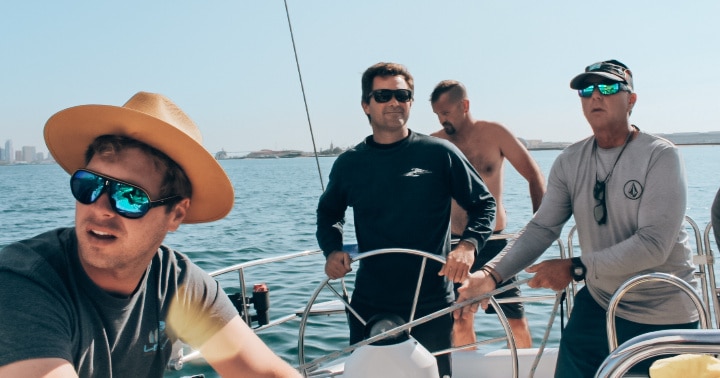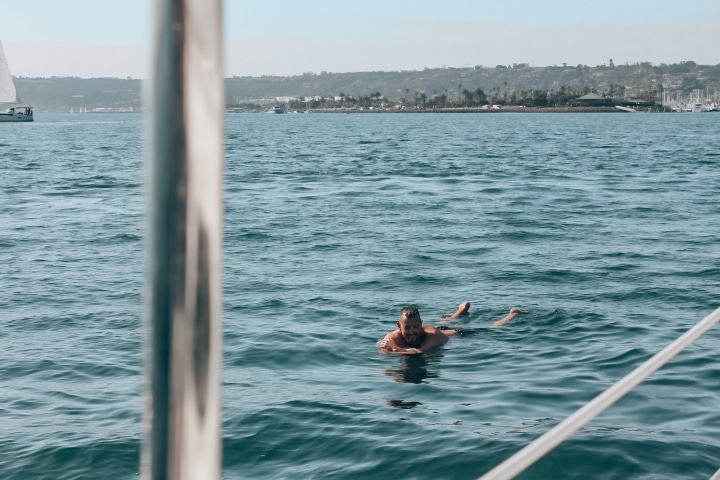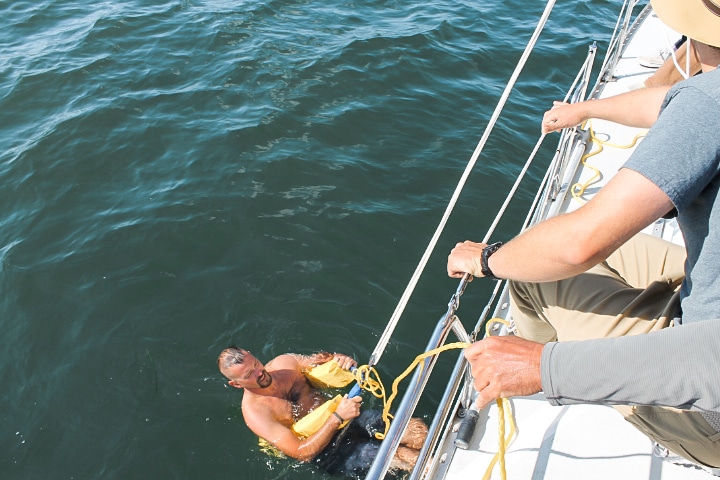Contributing Author: Theo Niekras, Sail San Diego Operations Manager, USCG-licensed captain
The safety of our guests is a top priority at Sail San Diego, and that’s why we go above and beyond to make sure our captains know what to do in emergency situations. All USCG-licensed captains are required to have first aid and CPR certification, but most only know what to do in other emergency situations only theoretically. What would a captain do if they lost steering? Or had a fire on board? During a collision? Or had someone fall from the side of the vessel into the water?
How many times do they actually encounter any of these situations?
The answer is: almost never.
And that’s a good thing. These events rarely happen. But just knowing what to do isn’t enough for Sail San Diego.
That’s why Sail San Diego captains meet for extra safety training where they can test their knowledge and skills, but also come up with practical solutions in real world scenarios with our own boats, because there’s often a time when theory does not line up with practice.
And that’s why this past month, on a sunny Wednesday, we chose to go over man overboard drills with a real person, not a buoy or a floating dummy.
Andrew, our fleet mechanic, bravely volunteered to be the person in the water, and each captain had a chance to practice a different scenario with all the other captains acting as novice crew who knew next to nothing. These scenarios included a simple man overboard, and the situation became more and more complex each time Andrew went in the water as the casualty. After each exercise, all the captains got together for an after-action review, noting things that were done well and others that could be improved upon. By then end of the day, all the captains were proficient in leading a novice crew through not only a simple man overboard, but one where the victim was completely incapacitated and had to be hoisted aboard with a lifesling. Andrew was almost hypothermic by the end because we practiced so much, but that just gave us opportunity to go through that emergency situation as well. Thanks Andrew!
We learned a lot as a team. Some of us were put outside our comfort zones. Some of us had different ideas about what to do based on our past experience. All of us had valuable input. What we learned we will carry with us for the rest of our lives, and every captain agreed that although there is a solid theory on how to rescue a person in the water, they all needed to see it in action to realize things aren’t always as they are on paper.
https://www.instagram.com/p/CW_9iQYvFw_/
For instance, many captains learned how to be loud and direct with guests, as emotions are likely to be running high in an emergency situation. They also learned how to delegate tasks and to explain what they were doing so that the other passengers knew. We learned that heaving-to, a technique to stall the boats and drift to the swimmer, isn’t as easy as it looks. First and foremost, we learned the limits and practicalities of theory, and what we should and should not do in actual, real-world, situations with our own boats.
Sail San Diego is proud to have the safest sailing fleet, piloted by the safest, funnest, most memorable captains in the Bay. And we are proud to take days away from normal operations and shut down so everyone on our team can learn and be on the same page.
Upcoming in the next few months: fire exercises, first aid scenarios, emergency loss of steering, and more.



